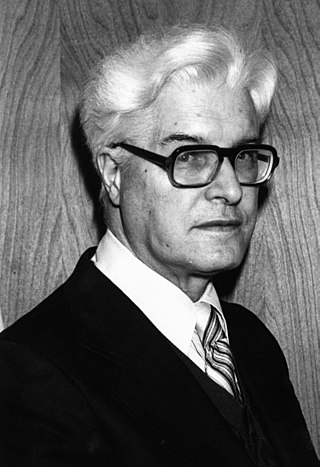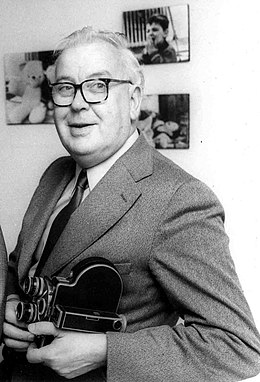Related Research Articles

In psychology, fantasy is a broad range of mental experiences, mediated by the faculty of imagination in the human brain, and marked by an expression of certain desires through vivid mental imagery. Fantasies are generally associated with scenarios that are impossible or unlikely to happen.
Psychoanalysis is a set of theories and therapeutic techniques that deal in part with the unconscious mind, and which together form a method of treatment for mental disorders. The discipline was established in the early 1890s by Sigmund Freud, whose work stemmed partly from the clinical work of Josef Breuer and others. Freud developed and refined the theory and practice of psychoanalysis until his death in 1939. In an encyclopedic article, he identified the cornerstones of psychoanalysis as "the assumption that there are unconscious mental processes, the recognition of the theory of repression and resistance, the appreciation of the importance of sexuality and of the Oedipus complex." Freud's colleagues Alfred Adler and Carl Gustav Jung developed offshoots of psychoanalysis which they called individual psychology (Adler) and analytical psychology (Jung), although Freud himself wrote a number of criticisms of them and emphatically denied that they were forms of psychoanalysis. Psychoanalysis was later developed in different directions by neo-Freudian thinkers, such as Erich Fromm, Karen Horney, and Harry Stack Sullivan.

Sigmund Freud was an Austrian neurologist and the founder of psychoanalysis, a clinical method for evaluating and treating pathologies seen as originating from conflicts in the psyche, through dialogue between patient and psychoanalyst, and the distinctive theory of mind and human agency derived from it.
Transactional analysis is a psychoanalytic theory and method of therapy wherein social interactions are analyzed to determine the ego state of the communicator as a basis for understanding behavior. In transactional analysis, the communicator is taught to alter the ego state as a way to solve emotional problems. The method deviates from Freudian psychoanalysis, which focuses on increasing awareness of the contents of subconsciously held ideas. Eric Berne developed the concept and paradigm of transactional analysis in the late 1950s.

Scapegoating is the practice of singling out a person or group for unmerited blame and consequent negative treatment. Scapegoating may be conducted by individuals against individuals, individuals against groups, groups against individuals, and groups against groups.
In psychology, displacement is an unconscious defence mechanism whereby the mind substitutes either a new aim or a new object for things felt in their original form to be dangerous or unacceptable.

Families and How to Survive Them is a bestselling self-help book co-authored by the psychiatrist and psychotherapist Robin Skynner and the comedian John Cleese. It was first published in 1983, and is illustrated throughout by the cartoonist J. B. Handelsman. The book takes the form of a series of dialogues between Skynner, playing the role of therapist, and Cleese, who adopts the role of inquisitive lay person.
Repression is a key concept of psychoanalysis, where it is understood as a defense mechanism that "ensures that what is unacceptable to the conscious mind, and would if recalled arouse anxiety, is prevented from entering into it." According to psychoanalytic theory, repression plays a major role in many mental illnesses, and in the psyche of the average person.
In psychology, intellectualization (intellectualisation) is a defense mechanism by which reasoning is used to block confrontation with an unconscious conflict and its associated emotional stress – where thinking is used to avoid feeling. It involves emotionally removing one's self from a stressful event. Intellectualization may accompany, but is different from, rationalization, the pseudo-rational justification of irrational acts.
Repetition compulsion is the unconscious tendency of a person to repeat a traumatic event or its circumstances. This may take the form of symbolically or literally re-enacting the event, or putting oneself in situations where the event is likely to occur again. Repetition compulsion can also take the form of dreams in which memories and feelings of what happened are repeated, and in cases of psychosis, may even be hallucinated.
Projective identification is a term introduced by Melanie Klein and then widely adopted in psychoanalytic psychotherapy. Projective identification may be used as a type of defense, a means of communicating, a primitive form of relationship, or a route to psychological change; used for ridding the self of unwanted parts or for controlling the other's body and mind.
In psychology, a family nexus is a common viewpoint held and reinforced by the majority of family members regarding events in the family and relationships with the world. The term was coined by R. D. Laing, who believed that this nexus "exists only in so far as each person incarnates the nexus...maintaining his interiorization of the group unchanged".

Henri Frédéric Ellenberger was a Canadian psychiatrist, medical historian, and criminologist, sometimes considered the founding historiographer of psychiatry. Ellenberger is chiefly remembered for The Discovery of the Unconscious, an encyclopedic study of the history of dynamic psychiatry published in 1970.

James Robertson (1911–1988) was a psychiatric social worker and psychoanalyst based at the Tavistock Clinic and Institute, London from 1948 until 1976.
Resistance, in psychoanalysis, refers to the client's defence mechanisms that emerge from unconscious content coming to fruition through process. Resistance is the repression of unconscious drives from integration into conscious awareness.
Emotional conflict is the presence of different and opposing emotions relating to a situation that has recently taken place or is in the process of being unfolded. They may be accompanied at times by a physical discomfort, especially when a functional disturbance has become associated with an emotional conflict in childhood, and in particular by tension headaches "expressing a state of inner tension...[or] caused by an unconscious conflict".
Virginia Mae Axline was a psychologist and one of the pioneers in the use of play therapy. She wrote the book Dibs in Search of Self. She was also the author of Play Therapy, published in 1947.
Martti Olavi Siirala was a Finnish psychiatrist, psychoanalyst and philosopher. He was inspired by psychoanalysis, the anthropological medicine of Viktor von Weizsäcker and the existential philosophy of Martin Heidegger. The outcome was a unique synthesis theory that Siirala called social pathology.
Parentification or parent–child role reversal is the process of role reversal whereby a child or adolescent is obliged to act as a parent to their own parent or sibling.
Enmeshment is a concept in psychology and psychotherapy introduced by Salvador Minuchin (1921–2017) to describe families where personal boundaries are diffused, sub-systems undifferentiated, and over-concern for others leads to a loss of autonomous development. According to this hypothesis, by being enmeshed in parental needs, trapped in a discrepant role function, a child may lose their capacity for self-direction; their own distinctiveness, under the weight of "psychic incest"; and, if family pressures increase, may end up becoming the identified patient or family scapegoat.
References
- ↑ Peter L. Rudnytsky, Reading Psychoanalysis (2002) p. 44
- ↑ Mary Barnes and Joseph Berke, Mary Barnes Penguin 1974) p. 84
- ↑ Robin Skynner/John Cleese, Families and how to survive them (London 1994) p. 103
- ↑ "Dysfunctional family", Encyclopedia of Psychology, April 6, 2001, http://findarticles.com/p/articles/mi_g2699/is_0004/ai_2699000448/
- ↑ Cooper, p. 17
- ↑ Sara E. Cooper, The Ties that Bind (2004) p. 17
- ↑ Eric Berne, A Layman's Guide to Psychiatry and Psychoanalysis (Penguin 1976) p. 295
- ↑ Skynner/Cleese, Families p. 104
- ↑ Berne, p. 295
- ↑ R. D. Laing, The Politics of Experience (Penguin 1984) p. 94
- ↑ S. H. Buckman/A. S. Gurman, Theory and Practice of Brief Therapy (2002) p. 93
- ↑ T. Pitt-Aikens/A. T. Ellis, Loss of the Good Authority (London 1989) p. 89, p. 118, and p. 185-6
- ↑ Robin Skynner/John Cleese, Life and how to survive it (London 1994) p. 38
- ↑ Virginia Axline, Dibs In Search of Self (Penguin 1975) page 80
- ↑ Gregory Bateson, Steps to an Ecology of Mind (1972) p. 237 and p. 243
- ↑ T. S. Eliot, The Complete Poems and Plays (London 1985) p. 333
- ↑ David Sedgwick, Introduction to Jungian Psychotherapy (London 2006) p. 63
- ↑ C. G. Jung, Memories, Dreams, Reflections (London 1983) p. 260
- ↑ Gray, Don; Weinberg, Jerry (2006). "The Identified Patient Pattern". The AYE Conference Exploring Human Systems in Action. The 2006 AYE Conference. Archived from the original on 2013-01-17. Retrieved 2016-07-20.
{{cite web}}: CS1 maint: bot: original URL status unknown (link)